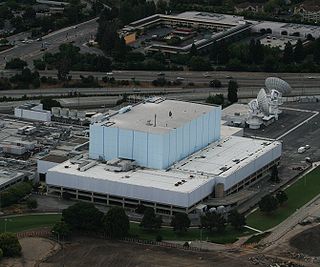External links
- Authorities Regarding Enhanced Use Leases (GAO)
- Enhanced Use Leasing (U.S. Army)
In the United States, the enhanced use lease (EUL) is a method for funding construction or renovations on federal property by allowing a private developer to lease underutilized property, with rent paid by the developer in the form of cash or in-kind services. Currently, EULs are used by the Department of Defense and the Veterans Administration. Temporary authority has also been granted to the General Services Administration and NASA. EUL authority is derived from Congress and is specific to each agency (e.g. 10 USC 2667 for the DoD). The information below is specific to DoD EULs.
Granted a ground lease (the term may vary by agency or project), the developer is able to make improvements to the property which can be leased at market rents to any interested tenants. Under EUL, the U.S. government retains control over the leased property, the EUL developer (lessee) retains a lease interest only.
Since the agency can issue enhanced use leases only on land that is unneeded, the improvements must not be directly tied to any programmatic requirements of the installation.
The advantages to the developer include prime secure convenient locations on military installations, and the opportunity to provide sole-source services and products in lieu of rent for the ground lease.
The advantages to the federal agency include the possibility of fast-tracking alterations, repairs or new construction so that the improved space becomes available for lease. In-kind considerations or cash to no less than the fair market value of the property is provided in return by the developer.
The enhanced use lease is becoming a very popular tool to accommodate realignment of military functions under Base Realignment and Closure (BRAC). Military installations are legally bound, but not necessarily funded, to accommodate BRAC-mandated realignments of functions.
The use of EULs has mushroomed with the expanded authority of Title 10 USC, Section 2667, of the National Defense Authorization Act. It remains to be seen whether this form of privatization will create increased financial, security or environmental risks. Legal complications that have emerged include how EUL-encumbered property will be treated when an installation is targeted for closure under BRAC (example, Building 40 at Walter Reed Army Medical Center).

Onizuka Air Force Station was a United States Air Force installation in Sunnyvale, California, at the intersection of State Route 237 and North Mathilda Ave. It was operational from 1960 to 2010.

The Hunters Point Naval Shipyard was a United States Navy shipyard in San Francisco, California, located on 638 acres (258 ha) of waterfront at Hunters Point in the southeast corner of the city.

Tinker Air Force Base is a major United States Air Force base, with tenant U.S. Navy and other Department of Defense missions, located in Oklahoma County, Oklahoma, surrounded by Del City, Oklahoma City, and Midwest City.
Base Realignment and Closure (BRAC) is a process by a United States federal government commission to increase United States Department of Defense efficiency by planning the end of the Cold War realignment and closure of military installations. More than 350 installations have been closed in five BRAC rounds: 1988, 1991, 1993, 1995, and 2005. These five BRAC rounds constitute a combined savings of $12 billion annually.

The 2005 Base Realignment and Closure Commission preliminary list was released by the United States Department of Defense on May 13, 2005. It was the fifth Base Realignment and Closure ("BRAC") proposal generated since the process was created in 1988. It recommended closing 22 major United States military bases and the "realignment" of 33 others. On September 15, 2005, President George W. Bush approved the BRAC Commission's recommendations, leaving the fate of the bases in question to the United States Congress. Congress had a maximum of 45 days to reject the proposal by passing a joint resolution of disapproval, or the recommendations automatically enter into effect. Such a resolution was introduced to the House of Representatives on September 23, 2005, by Rep. Ray LaHood (R-IL). The House took up debate of the resolution on October 26, 2005. The resolution failed to pass by a 324-85 margin, thereby enacting the list of recommendations. The Secretary of Defense was required to begin implementing the recommendations by September 15, 2007 and to complete implementation no later than September 15, 2011.

The Defense Supply Center, Columbus (DSCC), is one of three Inventory Control Points of the Defense Logistics Agency. The major organization on base is known as DLA Land and Maritime. Defense Finance and Accounting Service (DFAS) is also a major tenant on base. The base has been affected several times by the United States Base Realignment and Closure program. It is located in the Columbus, Ohio suburb of Whitehall. The DSCC has a historical marker. The base was opened in 1918.

Fort Monmouth is a former installation of the Department of the Army in Monmouth County, New Jersey. The post is surrounded by the communities of Eatontown, Tinton Falls and Oceanport, New Jersey, and is located about five miles (8.0 km) from the Atlantic Ocean. The post covers nearly 1,126 acres (4.56 km2) of land, from the Shrewsbury River on the east, to Route 35 on the west; this area is referred to as 'Main Post'. A separate area to the west includes post housing, a golf course, and additional office and laboratory facilities. A rail line, owned by Conrail, runs through Camp Charles Wood and out to Naval Weapons Station Earle. The post is like a small town, including a Post Exchange (PX), health clinic, gas station and other amenities. Until the September 11, 2001 terrorist attacks the post was open to the public to drive through; after that time, the post was closed to all but authorized personnel. The main road through the fort was reopened to the public in 2017.

The Jefferson Proving Ground, located near Madison, Indiana, was principally a munitions testing facility of Test and Evaluation Command of the United States Army Materiel Development and Readiness Command. JPG also serves other Department of Defense organizations as well as private contractors assigned.
Letterkenny Army Depot, the Center of Industrial and Technical Excellence (CITE) for Air Defense and Tactical Missile Systems, was established in 1942. The Depot is under the command structure of the U.S. Army Aviation and Missile Command (AMCOM). The facilities at Letterkenny are used to conduct maintenance, modification, storage, and demilitarization operations on tactical missiles and ammunition.

Defense Depot Ogden was a U.S. military installation located in Ogden, Utah. It encompassed 1,139 acres (5 km2) with its southwest corner located on 12th Street and Tomlinson Road. Its eastern border is the old Utah Northern Railroad, now owned by the Union Pacific Railroad.

Naval Support Activity New Orleans was a United States Navy installation until September 2011. During its time in operation, it was the largest military installation in greater New Orleans. It hosts activities for other branches of service and federal agencies.

The Joint Task Force National Capital Region Medical, also known as National Capital Region Medical, is located on the Naval Support Activity Bethesda campus in Bethesda, Maryland and was established by the Deputy Secretary of Defense, Gordon R. England.

The Port Authority of San Antonio is a public entity created to redevelop some of the land formerly occupied by Kelly Air Force Base in San Antonio, Texas. The port's 1,900-acre campus is the single-largest commercial/industrial property in Bexar County.

The Defense Media Activity (DMA) is a United States Department of Defense (DoD) field activity. It provides a broad range of high-quality multimedia products and services to inform, educate, and entertain Department of Defense audiences around the world. The Defense Media Activity is located on Fort Meade, Maryland. DoD field activities are established as DoD components by law, by the President, or by the Secretary of Defense to provide for the performance, on a DoD-wide basis, of a supply or service activity that is common to more than one Military Department when it is determined to be more effective, economical, or efficient to do so. DMA operates as a separate DoD Component under the authority, direction and control of the Assistant to the Secretary of Defense for Public Affairs.

The Air Force Real Property Agency (AFRPA) merged with the Air Force Center for Engineering and the Environment and the Air Force Civil Engineer Support Agency to form the Air Force Civil Engineer Center on Oct. 1, 2012.

Naval Training Center San Diego (1923–1997) is a former United States Navy base located at the north end of San Diego Bay, commonly known as, "boot camp". The Naval Training Center site is listed on the National Register of Historic Places, and many of the individual structures are designated as historic by the city of San Diego.

The Assistant Secretary of the Army for Installations, Energy and Environment is a civilian office within the United States Department of the Army. President Joe Biden nominated lawyer and Obama-era Deputy General Counsel for Environment, Energy and Installations Rachel Jacobson for the position on June 2, 2021; she has yet to be confirmed by the Senate. The White House referred to the position as "Assistant Secretary of the Army for Installations and Environment," omitting "energy."
A joint base (JB) is a base of the armed forces of the United States utilized by multiple military services; one service hosts one or more other services as tenants on the base. In most cases, joint bases have interservice support agreements (ISSAs) to govern how the host provides services to the tenants.

The Mark Center Building is a United States military installation and office building in Alexandria, Virginia. It is operated by the Washington Headquarters Services (WHS) of the United States Department of Defense (DoD), and provides office space for several other DoD agencies. The name of the site refers to the "Mark Center" property development in which it is located, at the intersection of Seminary Road and Beauregard Street at the Interstate 395 interchange.
Ontario Air National Guard Station is a former California Air National Guard facility located alongside Ontario International Airport in Ontario, California.